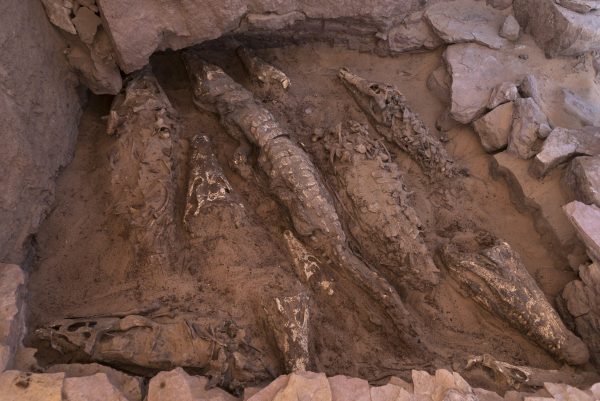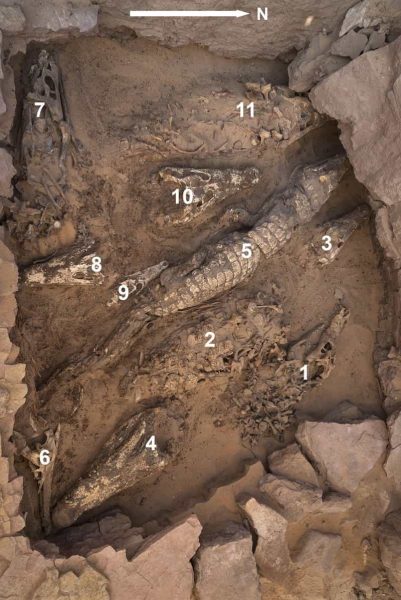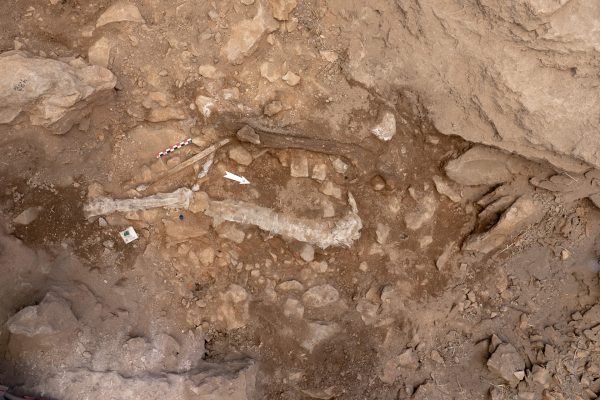In the heart of the Nubian Desert, archaeologists from the University of Jaén have unearthed a captivating tale from the ancient Qubbet el-Hawa necropolis, near Aswan. This archaeological treasure, untouched for millennia, has yielded an extraordinary surprise: the mummified remains of ten crocodiles.

Discovered in 2019 within an undisturbed tomb, this find transcends mere preservation; it offers a glimpse into the past. Comprising five complete crocodile skeletons and five additional skulls, each specimen narrates a unique story of the creatures’ significance in ancient Egyptian culture.
In ancient Egypt, crocodiles held reverence, symbolizing the might and power of the River Nile. Sobek, depicted as a man with a crocodile head, was worshipped as the lord of the waters—a protector and creator god.
The mummified crocodiles in Qubbet el-Hawa suggest they served as offerings or guardians for the tomb’s inhabitant, underscoring their importance in Egyptian religious practices.

The pristine condition of the tomb, undisturbed for centuries, provides invaluable insights into mummification techniques and associated rituals. These mummies showcase the Egyptians’ mastery in preserving life after death, shedding light on their profound connection to the spiritual realm.
The University of Jaén’s meticulous excavations not only enrich our understanding of ancient Egyptian funerary customs but also contribute to the broader field of Egyptology.
Each artifact and bone unveiled helps construct a more comprehensive picture of the past, breathing life into historical narratives.

Beyond historical curiosity, this discovery has implications for modern science. Studying the crocodiles’ remains allows scientists to gather data on the species’ evolution and the environmental conditions of ancient Egypt. It exemplifies how archaeological finds can influence diverse disciplines, from history to zoology to climate science.
The intact tomb and its crocodilian contents in Qubbet el-Hawa mark a remarkable chapter in history, reaffirming the ancient Egyptians’ expertise in mummification and their profound connection to the natural world.
As the University of Jaén continues its exploration, we eagerly anticipate the unfolding chapters of discovery emerging from the sands of time.





